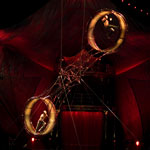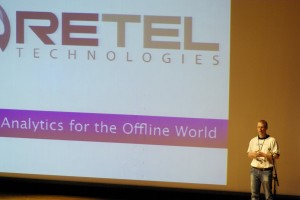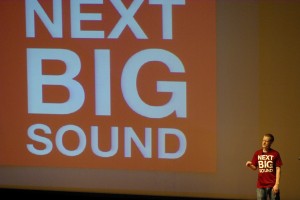Aug26
Cirque Du Soleil’s Visible and Invisible Innovation
Point: Behind-the-scenes innovation makes visible innovation shine
Story: I saw the premiere of KOOZA in Denver last week. Actually, it was my second time seeing KOOZA (the first was in Boston), and it was even better the second time.
The first time, I was mesmerized by the overt innovations in the show, like the “Wheel of Death.” Imagine two connected hamster-wheels, each of which spin while both together revolve vertically as well. Suspended high above the stage, the performers run, dive and somersault inside the wheels. And just when it looks like the act couldn’t get any more thrilling, the performers switch to running on the outside of the wheel.
 My second time at KOOZA, I sat in the second row, so I had a closer look at the costumes. Even from the very last row (where I sat the first time), I remember the dazzling shine of the juggler’s suit. The second time, I had a chance to see the intricacy of all the costumes, which led me to wonder about the R&D that must go into them. The costumes hug tight body lines yet flex with all the contortions the performers make.
My second time at KOOZA, I sat in the second row, so I had a closer look at the costumes. Even from the very last row (where I sat the first time), I remember the dazzling shine of the juggler’s suit. The second time, I had a chance to see the intricacy of all the costumes, which led me to wonder about the R&D that must go into them. The costumes hug tight body lines yet flex with all the contortions the performers make.
How does Cirque Du Soleil create these amazing costumes? First, Cirque hires talent: specialists in textile design, lace-making, shoemaking, wig-making, patternmaking, costume-making and millinery all work together to combine their knowledge.
Second, they actively seek out new materials which can be used. A “technological watch team” tracks global advances in adhesives, batteries and miniature lights to see how they could be incorporated into costumes. The team looks beyond boundaries of standard textiles to encompass fields such as avionics, plumbing, water sports and even dentistry for components that achieve the imagined task.
Third, the artisans of Cirque Du Soleil’s Costume workshop custom-make all the costumes, dyeing the colors in-house or painting costumes directly. They mold each individual hat on a plaster model of the artist’s head for a perfect fit. They consider comfort during these very athletic shows: the wig-making team, for example, builds wigs one hair at a time to achieve optimal ventilation. The attention to detail is staggering: the Bungee costumes used in Cirque’s Mystre each have over 2,000 hand-glued sequins. The juggler’s suit in KOOZA consists entirely of mirrored squares, like a disco ball.
Whether visible or hidden, Cirque du Soleil innovations shine.
Action:
* Hire specialists in multiple related disciplines to work as a creative team
* Explore beyond the expected. Cirque’s costume team doesn’t just use fabrics but expands into composite materials such as silicone, latex, plastics, foams and urethane
* Let team members be hands-on to devise ways to make an innovation work.
Further information:
If you’re in Denver, take advantage of seeing KOOZA yourself. It plays through Sept 27, with tickets available here. The show then moves to Santa Monica, CA in October and Irvine, CA in January. Info on future cities is here.
2 Comments »Case study, How-to, Innovation, New Product Development
 new company that helps retailers understand patterns of behavior at store locations. Many retailers have security cameras on site, but they rarely look at the data generated by those cameras because of the sheer volume of data. The raw data is typically viewed only in the event of a robbery. Retel, however, developed a cost-effective human-aided video data analysis service that extracts workplace performance analytics from all that unused video footage. For example, the system can help spot problems such as dirty tables at fast-food locations, employee theft, and capacity bottlenecks (such as a shortage of cashiers during certain hours). Retel provides its clients monthly reports to help managers see trends, behaviors, and time-of-day patterns that can help them better manage their stores.
new company that helps retailers understand patterns of behavior at store locations. Many retailers have security cameras on site, but they rarely look at the data generated by those cameras because of the sheer volume of data. The raw data is typically viewed only in the event of a robbery. Retel, however, developed a cost-effective human-aided video data analysis service that extracts workplace performance analytics from all that unused video footage. For example, the system can help spot problems such as dirty tables at fast-food locations, employee theft, and capacity bottlenecks (such as a shortage of cashiers during certain hours). Retel provides its clients monthly reports to help managers see trends, behaviors, and time-of-day patterns that can help them better manage their stores. social media to help band managers. The music industry is undergoing big changes, but sales of concert tickets are the highest they’ve been in ten years, and people are buying more music than ever. Giving band managers data can help them make better decisions. For example, real-time data from Twitter can be captured and analyzed to show who’s talking about which band and where they are — data that can provide great insight into a band’s fan base. Next Big Sound collects a host of both social media and web data to provide real-time marketing analytics that bands can use in variety of ways. For example, band managers can use the data to pinpoint the demographics of fans, scout new concert locations, and improve online ad placement. They can even suggest that a band mention people or events in the local area or give a shout-out to high-profile fans at a concert.
social media to help band managers. The music industry is undergoing big changes, but sales of concert tickets are the highest they’ve been in ten years, and people are buying more music than ever. Giving band managers data can help them make better decisions. For example, real-time data from Twitter can be captured and analyzed to show who’s talking about which band and where they are — data that can provide great insight into a band’s fan base. Next Big Sound collects a host of both social media and web data to provide real-time marketing analytics that bands can use in variety of ways. For example, band managers can use the data to pinpoint the demographics of fans, scout new concert locations, and improve online ad placement. They can even suggest that a band mention people or events in the local area or give a shout-out to high-profile fans at a concert.








